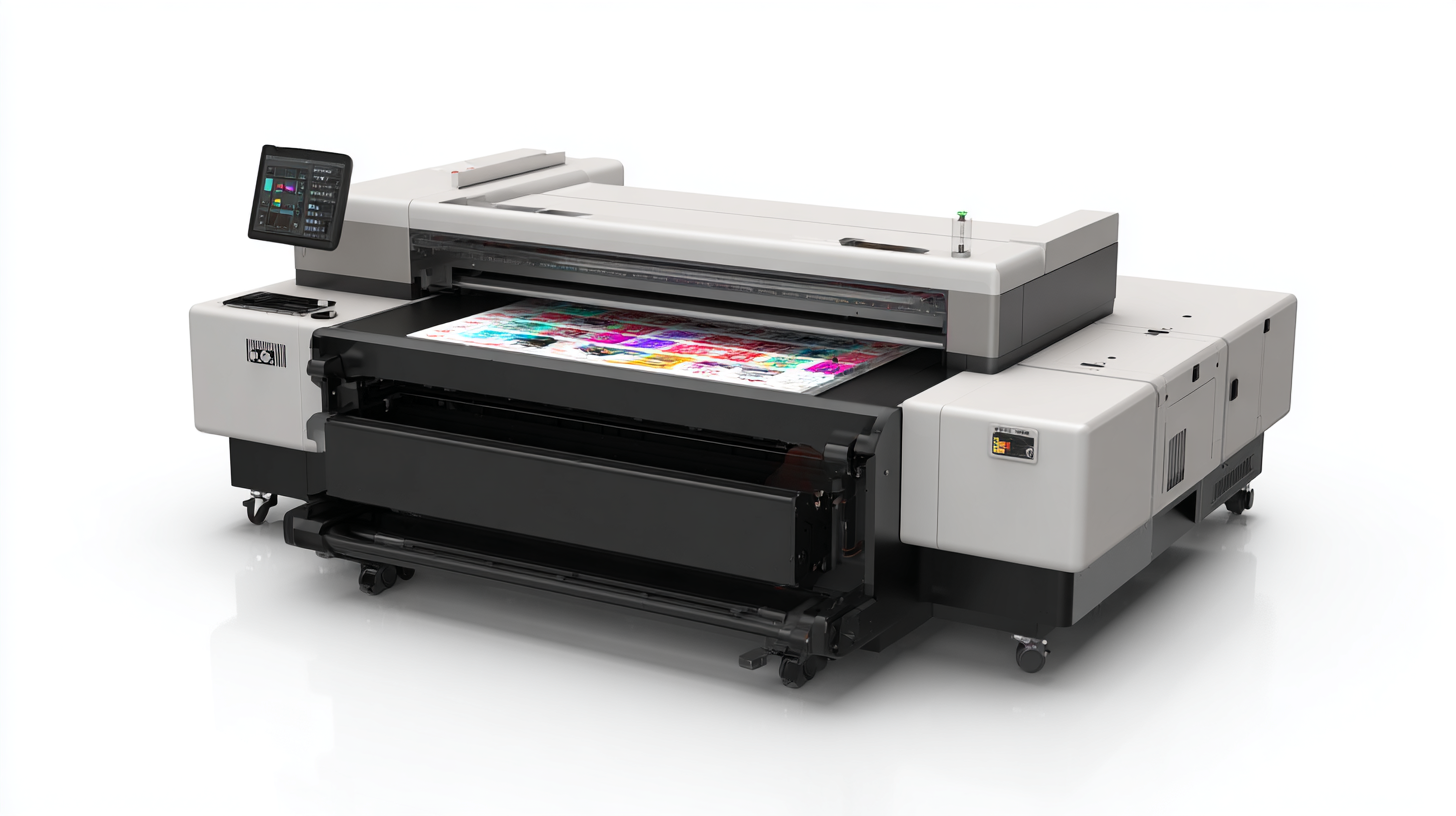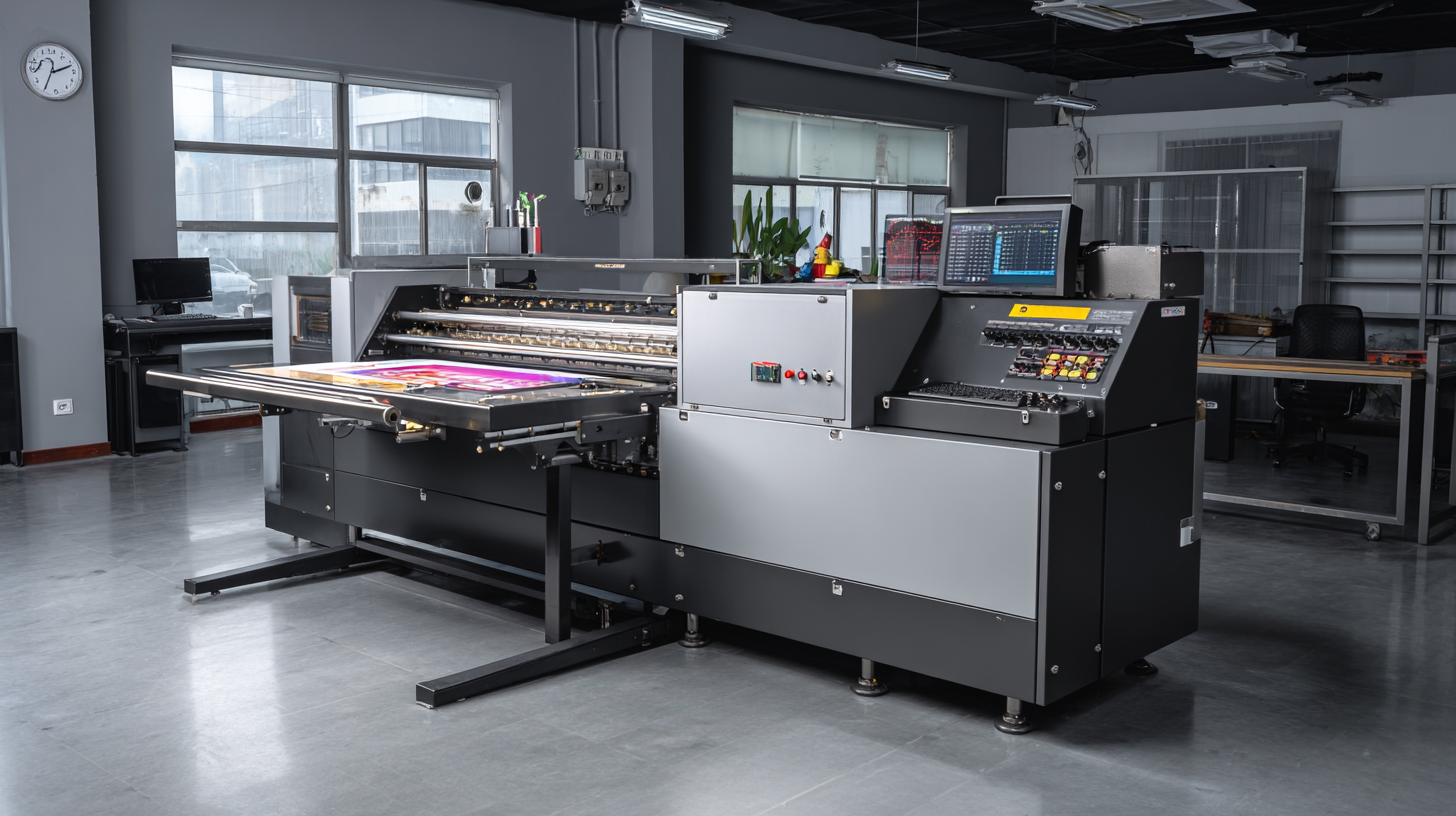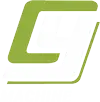In recent years, the demand for Sleeve Printing Machines has surged, driven by the booming global packaging industry, which is projected to reach USD 1 trillion by 2024. As businesses increasingly seek to differentiate their products through unique packaging solutions, the need for innovative and efficient printing technologies has become paramount. Traditional methods are often limited in flexibility and creativity, prompting manufacturers to explore alternative options that provide superior print quality and faster production times.

A report by Smithers Pira highlights that the global digital printing market is expected to grow at a compound annual growth rate (CAGR) of 12.8% from 2020 to 2025, making it an opportune moment for exploring advanced sleeve printing alternatives. This blog delves into the unique options available for Sleeve Printing Machines, emphasizing their advantages and the role of China's robust manufacturing base in meeting global demands.
 Sleeve printing machines have revolutionized the way we approach packaging and branding, thanks to their unique features and advanced technology. A deep dive into their technical specifications reveals why they stand out among alternatives. Most sleeve printers, for instance, utilize a rotary screen printing method, allowing for high-speed production and exceptional print quality. This technique is particularly beneficial for achieving vibrant colors and intricate designs, providing businesses with the flexibility to create eye-catching labels that attract customers.
Sleeve printing machines have revolutionized the way we approach packaging and branding, thanks to their unique features and advanced technology. A deep dive into their technical specifications reveals why they stand out among alternatives. Most sleeve printers, for instance, utilize a rotary screen printing method, allowing for high-speed production and exceptional print quality. This technique is particularly beneficial for achieving vibrant colors and intricate designs, providing businesses with the flexibility to create eye-catching labels that attract customers.
Another noteworthy feature of sleeve printing machines is their ability to print on a variety of substrates, including plastic, glass, and metal. This versatility makes them ideal for industries ranging from food and beverage to pharmaceuticals. Additionally, modern machines often incorporate advanced software for precise color management and detailed registration control, ensuring that every print aligns perfectly regardless of the substrate. The combination of speed, quality, and adaptability makes sleeve printing machines an attractive choice for businesses looking to enhance their branding strategies.
The comparative analysis of sleeve printing techniques across various industries reveals the significance of tailoring printing methods to specific applications. As industries increasingly adopt innovative materials, a notable trend emerges in the use of crystalline cellulose for sleeve printing. Recent advancements indicate that crystalline cellulose is making waves in 3D printing, which allows for the creation of intricate designs using eco-friendly materials. This shift is crucial for manufacturers seeking sustainable alternatives without compromising quality or functionality.
Furthermore, the exploration of 3D and 4D printing technologies emphasizes the need for adaptable equipment and processes in sleeve printing. A systematic review indicates that while 3D printing offers straightforward techniques, 4D printing introduces time-dependent processes, enhancing the usability of printed products. This comparison not only reflects the evolution of printing technologies but also underscores the potential for sleeve printing machines that incorporate these advanced methodologies, ultimately enabling various industries to thrive with innovative solutions tailored to their operational challenges.
| Industry | Printing Technique | Speed (units/hour) | Cost ($) | Material Compatibility |
|---|---|---|---|---|
| Food & Beverage | Digital Printing | 300 | 5000 | Plastic, Glass |
| Cosmetics | Flexographic Printing | 400 | 6000 | Plastic, Metal |
| Beverages | Screen Printing | 250 | 5500 | Glass, Metal |
| Pharmaceuticals | Rotogravure Printing | 350 | 7500 | Plastic, Paper |
| Industrial | Inkjet Printing | 500 | 8000 | Metal, Wood |
When evaluating sleeve printing machines, several key metrics can significantly impact their performance and efficiency. Firstly, print speed is crucial; machines that operate at speeds of 100 meters per minute or higher can outperform competitors, according to a report by the International Printing Association. In addition, the resolution and color accuracy of prints are vital. Modern machines can achieve resolutions exceeding 600 DPI, which enhances the visual appeal and quality of the final product.
Another essential metric is operational cost. A recent study from the Flexographic Technical Association indicates that the cost per print can vary drastically, with efficient machines reducing costs by up to 30% through less ink waste and lower power consumption. Evaluating energy efficiency and maintenance requirements is also essential; machines that offer easy maintenance and lower energy consumption can lead to significant savings over time.
Tips: When assessing printing machines, always request a demo to gauge real-world performance. Additionally, consider investing in machines with adaptive technology that allows for quick adjustments to substrate variations. These features can provide a competitive edge and enhance overall productivity.
When it comes to sleeve printing, traditional methods have long been the standard. However, innovative alternatives are emerging that offer unique benefits and challenges. For instance, digital printing technology allows for quicker turnaround times and greater design flexibility. Brands can easily customize designs for smaller batches, catering to niche markets without incurring high setup costs typically associated with traditional printing methods. This adaptability can significantly enhance customer engagement and product differentiation.
On the other hand, these modern techniques may present drawbacks, such as higher costs per unit for low-volume orders or potential limitations in material compatibilities. Additionally, while digital printing offers impressive quality, it can struggle to replicate the vibrant colors and durability achieved through traditional methods. As manufacturers explore these diverse printing options, it's essential to weigh the long-term benefits against the potential trade-offs, ensuring that the chosen method aligns with their operational goals and customer expectations. Ultimately, the landscape of sleeve printing is evolving, inviting a rethinking of how businesses approach design, production, and market strategy.

As the demand for high-quality, customized packaging increases, businesses are continuously seeking innovative solutions in sleeve printing technology. Future trends indicate a shift towards more sustainable printing methods, where eco-friendly materials and processes become the norm rather than the exception. Companies are expected to adopt water-based inks and biodegradable films, which not only reduce environmental impact but also appeal to the growing consumer base that prioritizes sustainability. This shift will likely redefine product branding strategies as businesses align their values with those of environmentally conscious consumers.
Moreover, advancements in digital printing technology are paving the way for shorter production runs and faster turnaround times. With the capability of personalizing designs on a small scale, brands can cater to niche markets more effectively. This flexibility is pivotal for businesses looking to adapt quickly to changing consumer preferences and trends. Additionally, the incorporation of automation and AI in sleeve printing processes is enhancing efficiency, allowing for real-time adjustments and high-quality outputs without compromising on speed. Embracing these technologies will empower businesses to stay competitive in an ever-evolving market landscape and meet the sophisticated demands of their customers.
